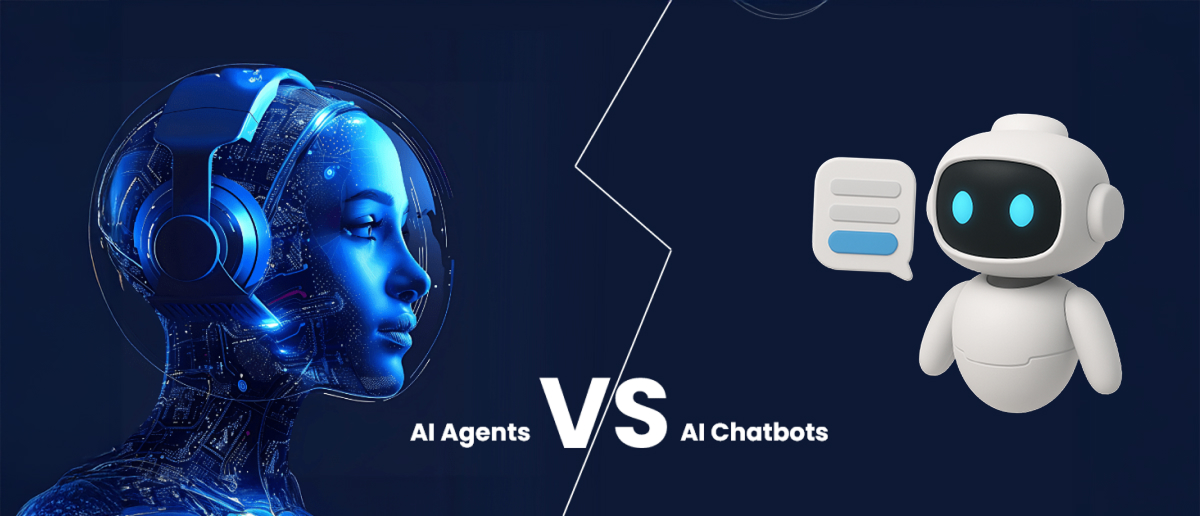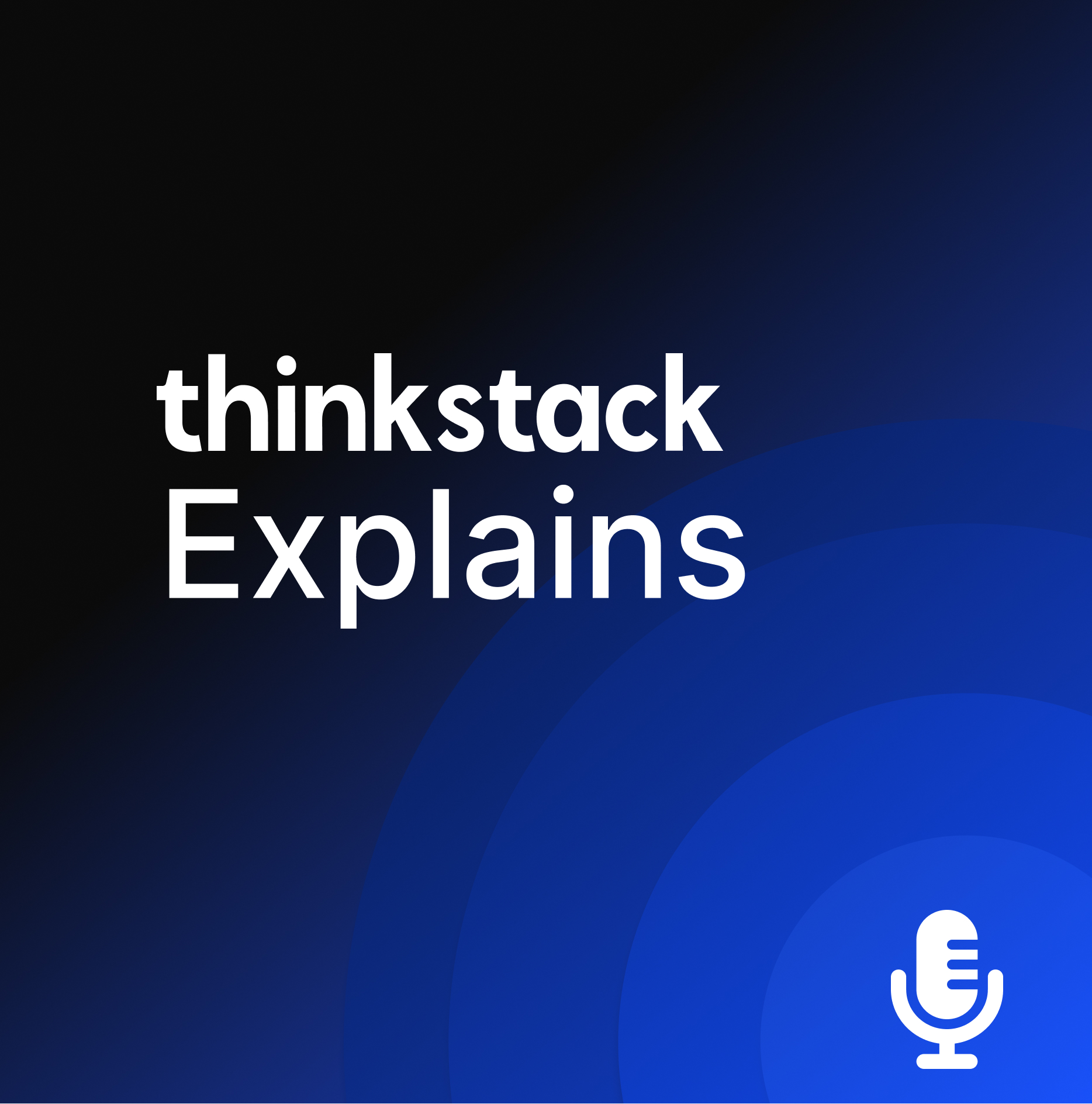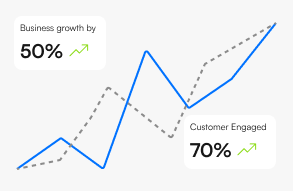AI Agent vs. AI Chatbot: What’s the Difference and How to Use Them the Right Way

Preetam Das
April 25, 2025
17 min

Table of Contents
AI agents are a relatively new concept compared to chatbots. Chatbots have been around for years, mostly used to answer questions and guide users through basic flows. But with the development of powerful language models, they’ve gotten a lot smarter.
Now that both chatbots and agents use similar AI under the hood, the terms often get used interchangeably.
But while both are built on large language models and can handle natural conversation, what they’re designed to do and how they function are fundamentally different.
Prefer to Listen?
Tune into the audio version of this article, presented in a podcast-style format.

What is an AI Chatbot?
At their core, chatbots were designed for conversation, not action. They answer questions, respond to prompts, and simulate human-like dialogue management. Even with all the progress in context awareness and natural language understanding, it’s still a conversational system.
They’re great at handling high volumes of simple requests—24/7. That includes answering FAQs, guiding users through forms, collecting contact details, or giving basic product info. You’ll mostly see them in customer support, live chat, and landing pages, places where speed and scale matter more than logic or autonomy.
Types of AI Chatbots
- Rule-based chatbots
Follow decision trees. Good for FAQs and simple paths, but rigid. No real understanding of what users actually mean. - AI-powered chatbots
Use Natuaral Language Processing and Machine Learning to understand intent. They are smarter than rule-based systems. They can recognize user input, extract meaning, and adjust responses accordingly. - Hybrid chatbots
Mix rules with AI. Use decision trees for predictable flows, and fall back on AI for handling more open-ended or unexpected inputs. - Generative AI chatbots
Run on large language models. They generate natural, flowing responses. Great for realistic conversation, but still built to respond, not act. - Keyword recognition chatbots
Trigger replies based on specific words or phrases. More flexible than menus, but still limited. Can miss context or nuance. - Menu-based chatbots
Structured bots that guide users through buttons or choices. Easy to use, but only works when the path is clear and predefined. - Voice chatbots
Understand and respond to spoken input. Useful for hands-free tasks or accessibility. Can struggle with accents or noisy environments. - NLP chatbots
NLP chatbots focuses on understanding human language, not just keywords. More context-aware, but not always capable of autonomous decision-making.
Many businesses choose a chatbot based on popularity or surface features. But the chatbot you select can shape how your brand communicates, supports users, and scales over time. Simply plugging in any chatbot and hoping for results isn’t enough.
These two guides will help you choose the right one for your business and measure the real ROI it delivers in your business:
- Why Every Business Will Eventually Have an Internal AI Agent
- Understanding Chatbot ROI in 2026 and How to Measure Real Impact
What is an AI Agent?
AI agents take things a step further than advanced AI chatbots. Both can hold natural conversations, understand intent, and interact with systems, but agents are built to operate.
At their core, agents combine a brain (usually an LLM) with memory, logic, and execution systems. They gather input from APIs, data sources, or documents, process that information using reasoning or planning techniques, then take action, like updating a system, triggering a workflow, or using external tools.
Many agents can even improve over time, learning from feedback and adjusting their approach.
Types of AI Agents
- Simple reflex agents
Follow basic “if-this-then-that” logic. Good for predictable environments. - Model-based agents
Use memory to track context and respond based on past inputs. - Goal-based agents
Plan actions by comparing the current state to a target goal. They think ahead. - Utility-based agents
Make decisions based on what’s most useful or valuable in a given situation. - Learning agents
Improve over time using feedback. They adapt based on what works. - Autonomous agents
Operate independently, making decisions in real-time without waiting for prompts. - Multi-agent systems
Multiple agents, each with their own job, work together to complete a larger task. - Hybrid agents
Mix planning, learning, and reactive logic. Built for flexibility in complex environments.
If you want to stay ahead while most are still figuring it out, we’ve broken down all 8 types of AI agents, what they do, where they fit, and how to choose the right one.
What if you could get the best of both worlds?
With Thinkstack - AI agent builder, you don’t have to choose between an AI chatbot and an AI agent. The platform lets you build advanced AI chatbots that go beyond basic responses, they can perform complex tasks like an AI agent.
You can upload your data and instantly extract insights, track trends, and generate detailed reports. You can also automate repetitive processes, trigger workflows, and handle logic-based actions, right from a conversational interface. And it’s built to scale with your business.
- Also read: The best AI Agents examples, see practical examples, and how they can support business growth.
AI Chatbots vs AI Agents in action
AI Chatbots are usually built into the front-end to answer FAQs, guide visitors, and help with form fills.
Some can connect to back-end systems like CRMs to pull customer info or update records, but most stick to surface-level tasks and interactions.
For high-volume, low-complexity use cases, they’re still the most efficient and scalable option.
AI Chatbots deliver quick wins, require minimal setup, and can deflect a large portion of support workload, without needing deep logic, planning, or autonomy. They scale especially well in industries like retail, banking, E-commerce, insurance, and healthcare, where users expect fast, consistent answers.
Agents plug into core systems and can run logic-based actions without waiting for a prompt. It can handle things like sales ops, finance automation, data research, internal tools, and more.
In some setups, one agent handles a specific part of the task, like pulling data from a system. Another takes that data, analyzes it, and passes it on. A third might use the result to create a report or send a message. Each agent has a clear job, and they work in a sequence to complete the bigger goal.
This kind of setup is called multi-agent, and it’s how more advanced automation is starting to take shape.
AI Chatbots vs. AI Agents a quick comparison
| Category | AI Chatbots | AI Agents |
|---|---|---|
| Purpose | Built to simulate human-like conversation and respond to user input. | Built to achieve goals autonomously by planning and executing tasks. |
| Interaction | Reactive: responds when prompted. | Proactive: can act based on internal goals or triggers without input. |
| Architecture | LLM-based interface focused on text-in/text-out processing. | LLM combined with memory, planning, and tool-execution components. |
| Task Handling | Handles one step at a time within a single session. | Manages multi-step tasks, sequences, and workflows across sessions. |
| Memory | Session-limited or context-based short-term memory. | Persistent memory: supports short-term and long-term context retention. |
| Tool Use | Limited; often relies on plugins or external API calls triggered by the user. | Direct tool execution; autonomously selects and uses APIs, tools, or code. |
| Autonomy Level | Low autonomy; requires direct input to operate. | Medium to high autonomy depending on the system; can act independently. |
| Learning Method | Trained with supervised learning or instruction tuning. | Uses reinforcement learning or feedback-driven optimization for adaptation. |
| Deployment | Primarily cloud-based; accessed via browser or APIs. | Can run on cloud, local infrastructure, or hybrid environments. |
| Use Cases | Customer support, FAQs, content generation, and conversational UI. | Workflow automation, research agents, report generation, and data analysis. |
| System Control | Designed to stay within controlled boundaries of interaction. | Built for flexible task execution with logic branching and planning ability. |
| Scalability | Scales efficiently for large-volume, low-complexity interactions. | Scales for complex, variable workflows across systems and platforms. |
| Integration | Embedded in front-end tools (web chat, support forms, messengers). | Integrated into backend systems (e.g., CRMs, APIs, databases) for execution. |
| Decision-Making | No decision logic; outputs depend on prompt content. | Can make conditional decisions based on inputs, memory, and environment. |
How to choose between AI Chatbots and AI Agents
Choosing between an AI chatbot and an AI agent depends on your specific goals, the complexity of tasks, available resources, chatbot use cases and how much control you want the system to have on its own.
- Use Case Simplicity
Some tasks just need simple responses like answering FAQs or collecting contact info. Others involve logic, decisions, or coordination across systems. The right choice depends on how complex or dynamic the task is. - Context and Memory
Chatbots work one session at a time. Once it ends, the memory usually resets. Agents keep track, pulling from past interactions, updating based on what’s changed, and using that context to shape what comes next. - Budget Constraints
If the budget is tight, chatbots are easier to start with. No-code tools and simple flows keep costs low, like Thinkstack. Agents need more setup, more infrastructure, and more investment to build and scale right. - Technical Expertise and Maintenance
Chatbots can run with minimal tech input, basic logic, and simple updates. Agents need more engineering behind the scenes. You’re managing tools, memory, workflows, and real-time decisions. - Scalability
Chatbots scale by handling more of the same workflows. Agents scale by handling more complexity, cross-system automation, decision logic, and adapting to changing inputs. - Security and Compliance
Working with sensitive data or strict rules around privacy, it matters how much access the system has. Chatbots are easier to lock down, they handle fewer things and stay on the surface. Agents go deeper and touch more systems, so they need stronger security and more careful monitoring.
Conclusion
AI chatbots and AI agents might sound similar on the surface, but what they do and how they do it are very different. Chatbots are great when you need fast, simple, and scalable interactions. Agents are useful when the job needs reasoning, memory, and the ability to act without waiting for a prompt.
Choosing between the two isn’t about which is better. It’s about what fits your workflow, your tech stack, your team, and your goals.
And as large language models keep evolving, the line between the two will likely blur even more. Chatbots will get smarter, and agents will get faster and more connected.
If you’re looking for something that lets you get the best of both worlds, Thinkstack is built for that. You can train it on your data, automate workflows, pull insights, and launch within minutes without writing any code.
Try Thinkstack’s AI in action
Start building with ThinkstackFrequently Asked Questions (FAQs)

Grow Your Business with AI Agents
- Automate tasks
- Engage customers 24/7
- Boost conversions